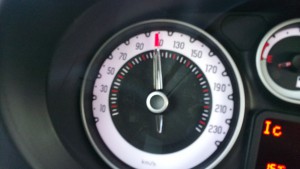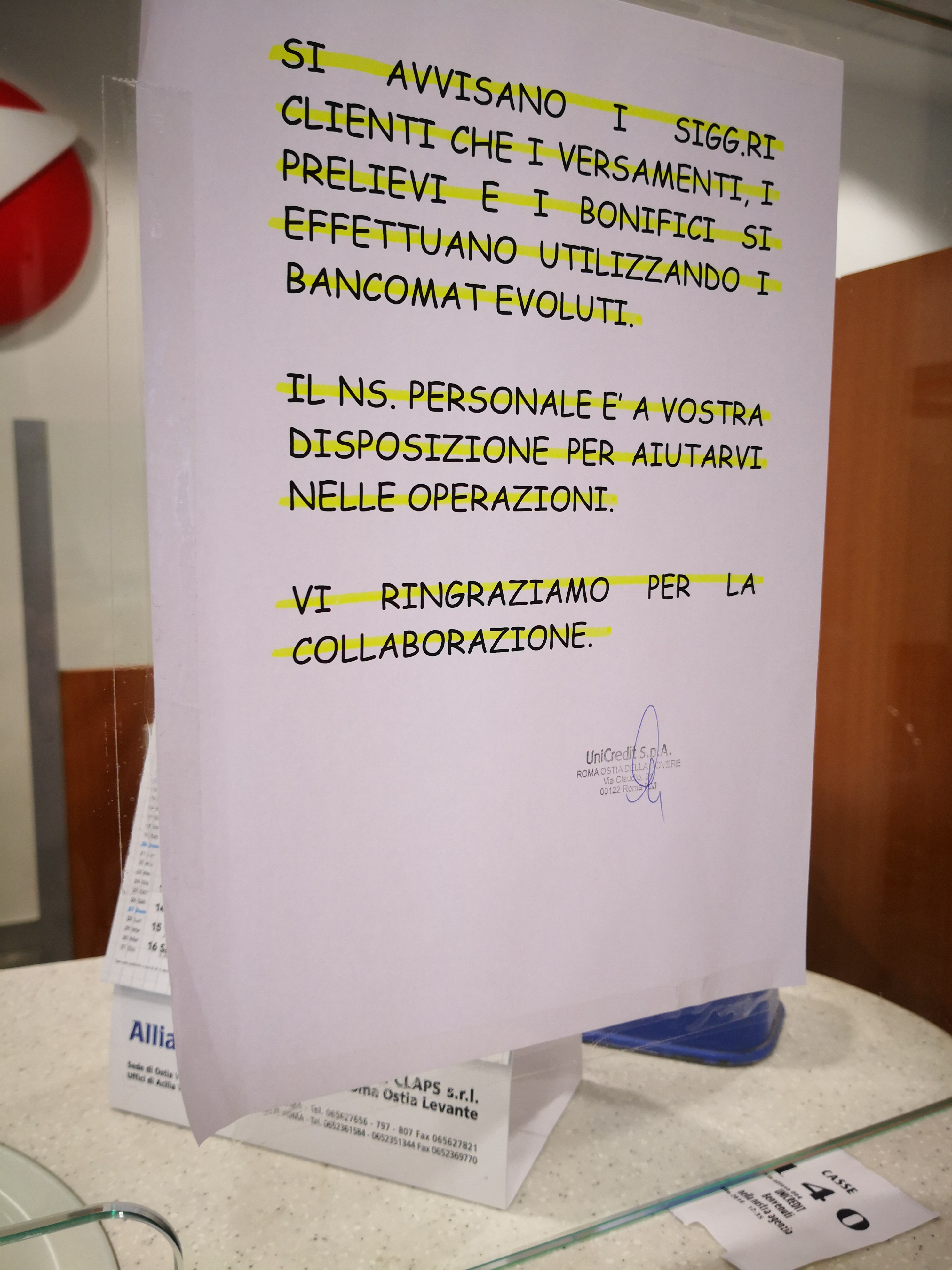
Speedometers come in a range of formats. Some are purely digital; most are analog. Digital speedometers have the cognitive advantage of an immediate and precise reading of the speed, but are poor in signaling accelerations. Analog devices convey an immediate sense of the acceleration, but the actual speed is generally approximate, and must be inferred by interpolation (as it is impossible to pack the whole range of speed values in the relatively small interface.)
Advantages and shortcomings may well be balanced.
But surely there is room for differences in effectiveness within each format. How quick is the retrieval of information in the analog display, how smooth the deployment of inferences? What is my speed right now?
Fiat has chosen to display 20km/h increments in its 500L model speedometer. Now the first tag is at 10km/h. This produces a series of tags that runs: 10, 30, 50, 70… At times the needle hides the tag. What is my speed right now? Intuitively, 90 is followed by 100, in a ten-increment. We need to remember that we are in a twenty-increment, and make thus a slightly longer calculation to find out that we drive at 110km/h.



